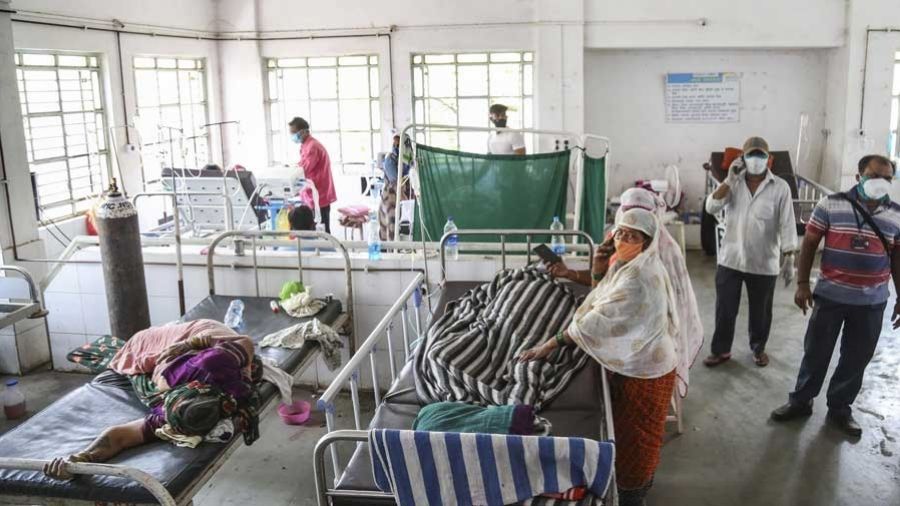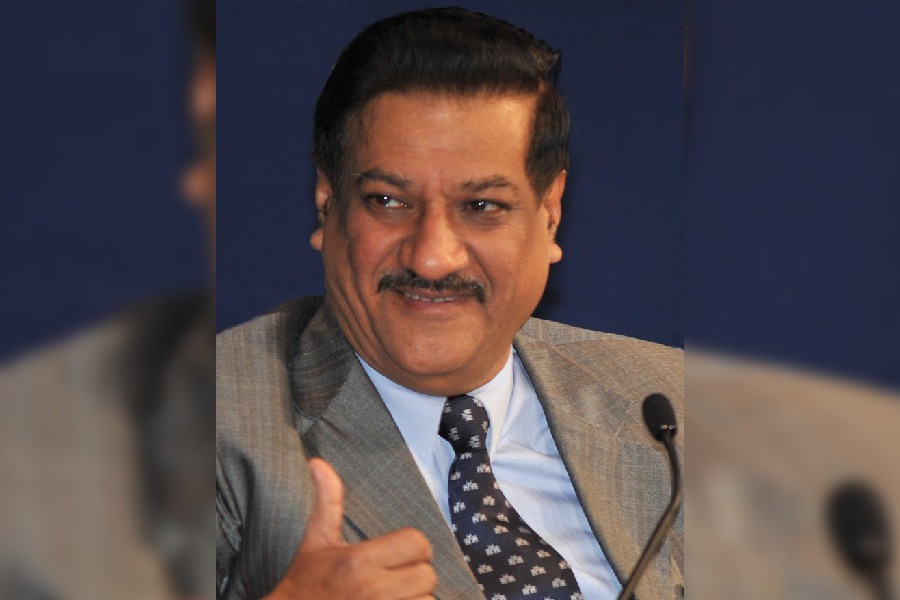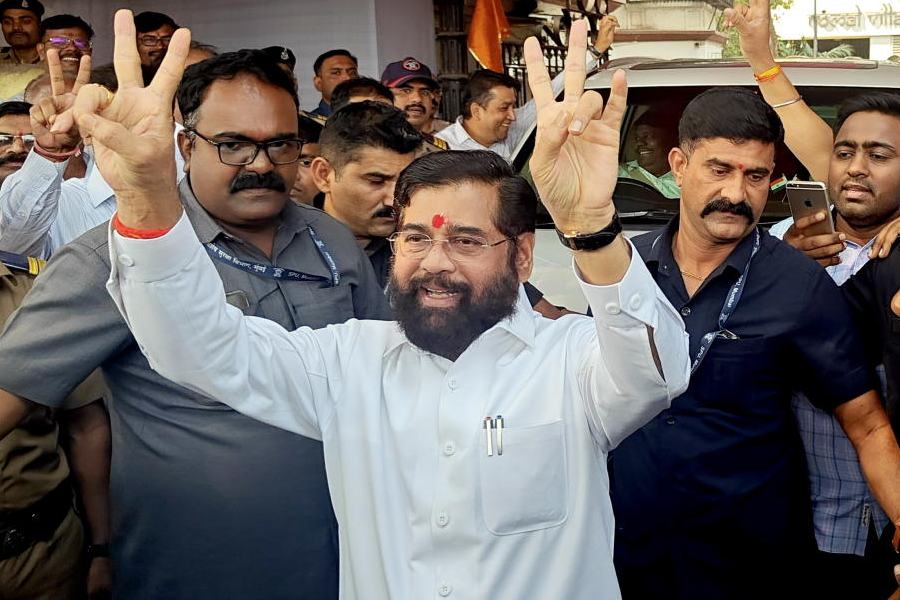The demand for oxygen beds and ventilators for Covid-19 patients appears for now decoupled from the steep rise in cases and hospitalisation, doctors said on Sunday, citing early observations over the past week in Calcutta, Delhi and Mumbai.
The counts of hospitalised Covid-19 patients have increased in all three cities, but the fractions that require extra oxygen remain lower than those observed during earlier waves, the doctors said. The three cities together accounted for nearly 30 per cent of India’s 159,000 new cases on Saturday.
“We’re seeing a different picture of the infection,” said Anjan Trikha, professor and critical care specialist at the All India Institute of Medical Sciences, New Delhi.
“We’re mainly seeing upper respiratory tract involvement; we’re not seeing pneumonia or acute respiratory distress syndrome.”
Delhi’s daily new infections have increased seven-fold over the past week, from around 2,700 new cases on January 1 to about 20,000 cases on January 8. Covid-19 hospitalisations have also increased alongside — bed occupancy rose from 247 on January 1 to 1,586 on January 8.
In Mumbai too, as daily new infections rose from 6,300 to around 20,300 over the past week, hospital bed occupancy increased from 2,760 to around 7,200 on January 8. Nearly 30 per cent of oxygen-supported beds in the city are now occupied.
In Calcutta, Covid-19 bed occupancy increased from 1.7 per cent on January 1 to 4.9 per cent on January 8.
“So far, very few people have required either intensive care or ventilator support,” said Sumit Ray, a critical care medicine specialist and dean at the Holy Family hospital, New Delhi.
“Our focus now should really be on turning away from (the rise in) new cases to the demand for oxygen or critical care support.”
At the Holy Family hospital, for instance, only one among the 30 admitted patients on Saturday — an unvaccinated 70-year-old with underlying chronic kidney disease — was under ICU support.
The trends so far, Ray said, are in line with observations from South Africa, where the demand for oxygen has been lower during the omicron-driven surge compared with any of the earlier three waves. The third of these waves was caused by the delta variant, which also fuelled India’s second wave in April-May last year.
Some doctors have cautioned that their observations cover only the period of about one to two weeks since the three cities began to experience sharp spikes in daily infections. They have said it is too early to predict the impact on oxygen and ventilator demand if new cases continue to rise for several weeks.
“It might be best to wait until the third week after the start of the surge to assess the impact on critical resources such as oxygen or ventilators,” said Rahul Pandit, a critical care specialist at Fortis Hospital, Mumbai, and member of Maharashtra’s Covid-19 task force.
Doctors say that some patients with co-morbidities, or underlying health disorders, have sought admission for fear of developing severe disease.
“Almost all patients in intensive care are there because of co-morbidities,” said Yogiraj Ray, associate professor of infectious diseases at the Institute of Postgraduate Medical Education and Research, Calcutta.
In cities with large epidemics and widespread infection prevalence, he said, some of the hospitalised patients got incidentally diagnosed with Covid-19 before admission for other health disorders.
Calcutta’s test positivity rate — the proportion positive among those tested — over the past week has been 57 per cent, according to data from the Union health ministry on Sunday.











